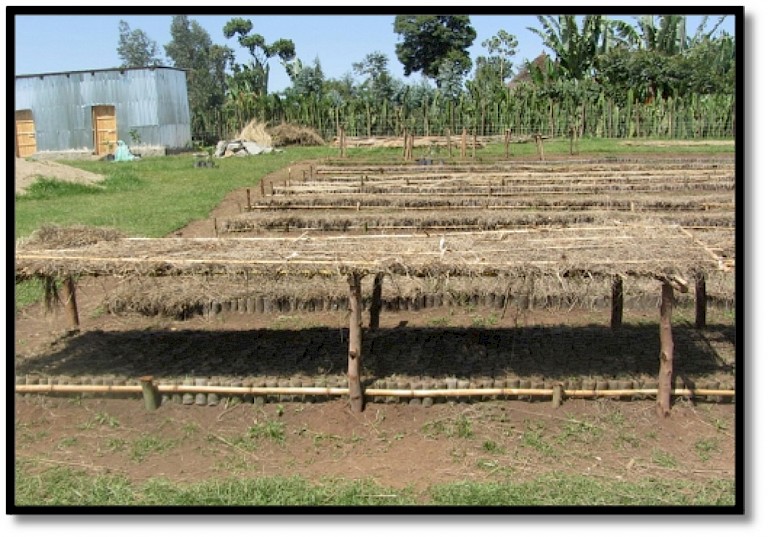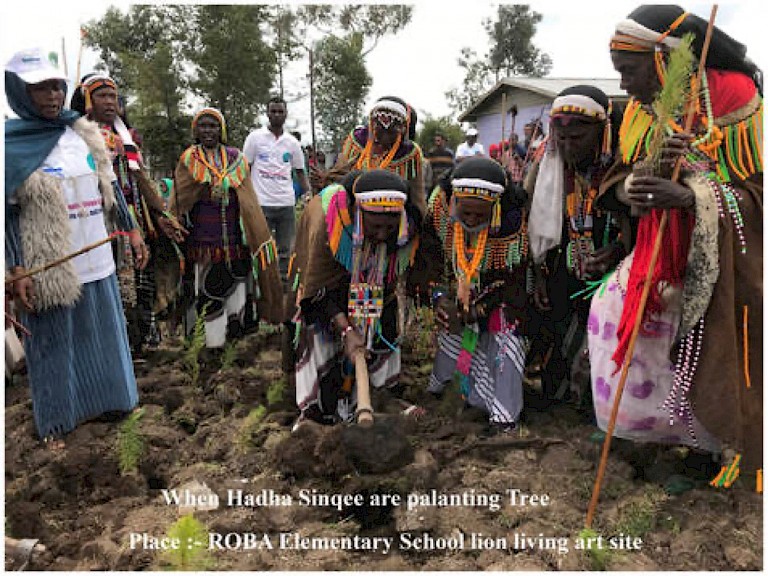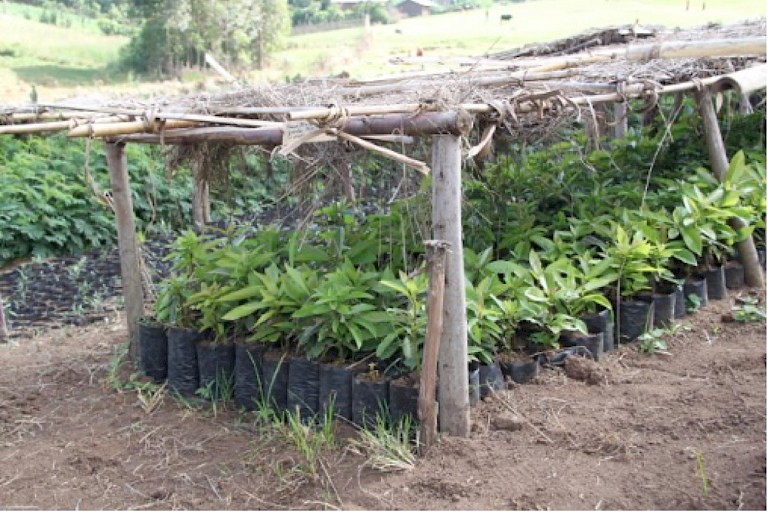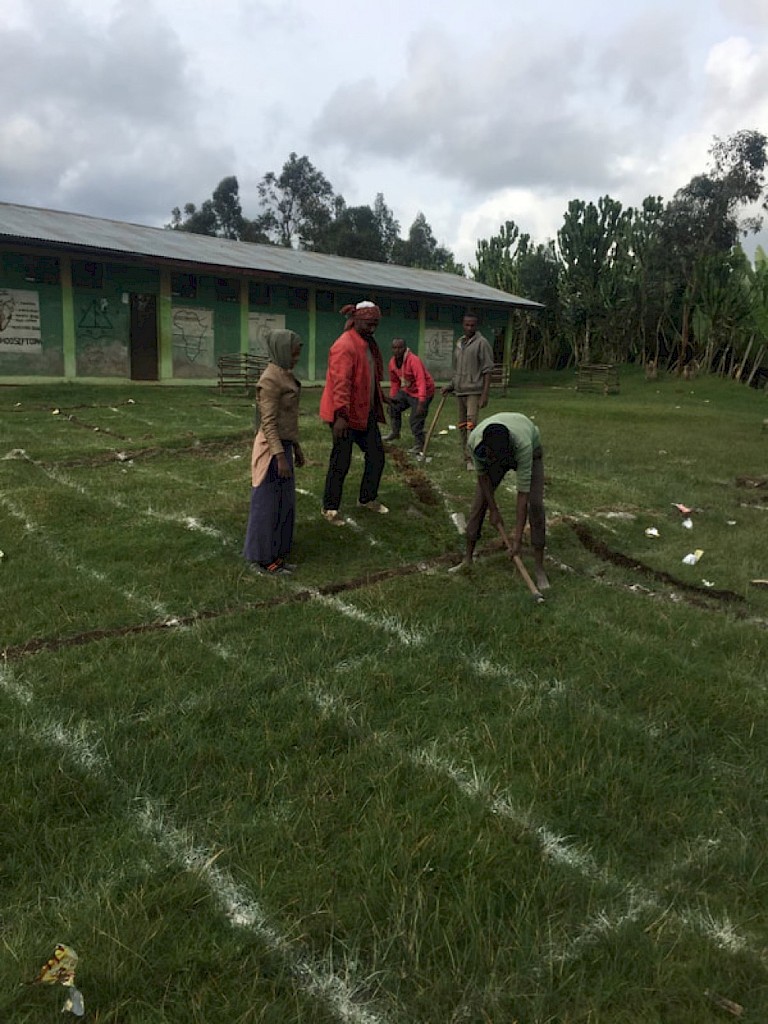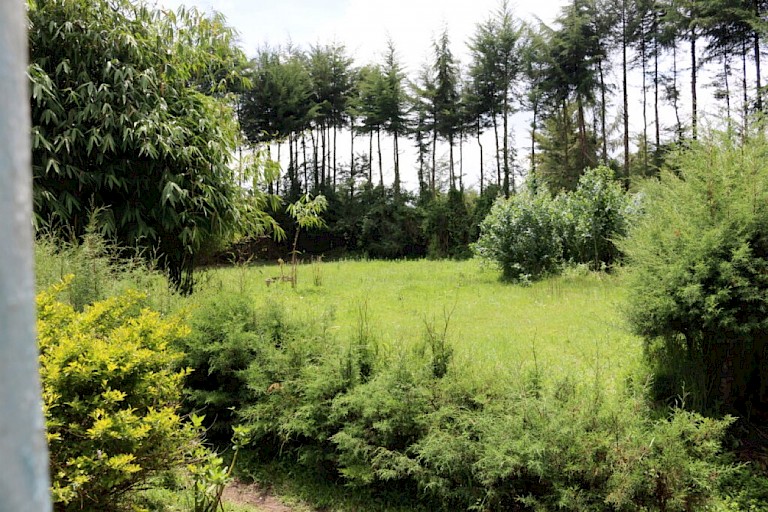



The artwork was planned as a collaboration between institutions, artists and communities using. The artists utilised materials from Dundee City Council to plan the project as it will be carried out in the host pastoral community of Ethiopia. After a series of community engagement led by the Pastoral community themselves, to choose the plants that will help restore their ailing biodiversity. They also had conversations about the Ethiopian black lion. It is the symbol and outline the lion that formed the Tree of Life. There were support from professionals in the climate art, exploring the intersection of Indigenous knowledge, Nature, Art, and Science in the context of climate change and the Anthropocene. The goal is to activate community and nature care through visual art principles, intertwining relationships between people, hope, respect, Earth, and the environment. It is important to note that the project is funded by the British Council with support from other organisations. The Oromo people are an ethnic group who live on the mounts of Ethiopia and some parts of Kenya.The vision includes biodiversity, resilience, communication across land, air, space, and collaboration with NASA's Crew Earth Observation. Frugal technologies like Google Earth are employed for monitoring land change, over time, along with considerations of cultural rights. The focus extends to living materials, creating platforms for sharing and learning, fostering public respect for nature, and expanding the boundaries of art-making to incorporate nature as both subject and process. It envisions collaborative processes for co-creating land artworks and provides community guides for initiating earth observation climate artworks. Quite an ambitious and inspiring vision!
The excellency of the Living artwork lies more in Its overarching contributions to the field of public art, by engaging the public through its development process and completion. The artist acknowledges the large individual and organisational collaborations which manifested in a massive and hugely impactful living artwork which is not possible with one or two persons collaborating.Academically it provides a practical example of the intersection between art, environmental conservation, and community development. It serves as a case study for academic research in fields such as environmental art, community engagement, and the impact of art on societal issues.The artwork has a leading and experimental role in the field of environmental art. The concept of using living trees as a medium for artistic expression and embedding it on google earth for aerial visibility is experimental and leadership oriented. It is an innovative approach for the team to create a 50-meter lion-shaped nursery integrating art into ecological restoration efforts. I see it as an intergenerational approach to the use of art as a tool in climate action. Other reasons for its excellence can be grouped into economic, social and cultural impact.Economic Impact: The project providing employment opportunities, especially through activities related to tree farming and agroforestry. The establishment of the tree nursery in the Kofele community must have had some economic impact Social Impact: The project empowered the local community, particularly women and younger generations, by imparting knowledge about climate change, tree planting, and agroforestry. The project brought about the conversation between stakeholders in Ethiopia, Canada and the United Kingdom to not just address environmental concerns but also enhance the resilience of the community in the face of climate-related challenges.Cultural Impact: The symbolic use of the Ethiopian lion as a representation of biodiversity loss and potential extinction ties the project to the cultural identity of the region. By addressing the perceived loss of cultural heritage among the younger generation, the project becomes a cultural intervention, bridging generational gaps.
